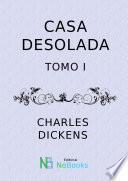
Busca tu Libro:

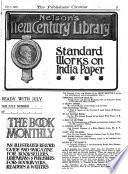
British Books
Número de Páginas: 774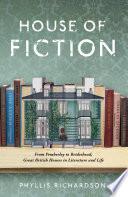
House of Fiction
Autor: Phyllis Richardson
Número de Páginas: 403From the gothic fantasies of Walpole’s Otranto to post-modern takes on the country house by Kazuo Ishiguro and Ian McEwan, Phyllis Richardson guides us on a tour through buildings real and imagined to examine how authors’ personal experiences helped to shape the homes that have become icons of English literature. We encounter Jane Austen drinking ‘too much wine’ in the lavish ballroom of a Hampshire manor, discover how Virginia Woolf’s love of Talland House at St Ives is palpable in To the Lighthouse, and find Evelyn Waugh remembering Madresfield Court as he plots Charles Ryder’s return to Brideshead. Drawing on historical sources, biographies, letters, diaries and the novels themselves, House of Fiction opens the doors to these celebrated houses, while offering candid glimpses of the writers who brought them to life.
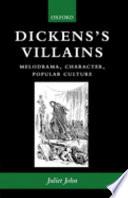
Dickens's Villains
Autor: Juliet John
Número de Páginas: 276This study argues that Dickens' villains embody the crucial fusion between the deviant and theatrical aspects of his writing.

The Historical Magazine and Notes and Queries Concerning the Antiquities, History and Biography of America
Número de Páginas: 822
Neo-Formalist Papers
Autor: Andrew
Número de Páginas: 355The essays have been grouped under the following headings: I. Language and the boundaries of genre.- II. Text and intertext.- III. Authorial status and modernity. Steene).

Twenty-First Century Perspectives on Victorian Literature
Autor: Laurence W. Mazzeno
Número de Páginas: 231Victorian literature’s fascination with the past, its examination of social injustice, and its struggle to deal with the dichotomy between scientific discoveries and religious faith continue to fascinate scholars and contemporary readers. During the past hundred years, traditional formalist and humanist criticism has been augmented by new critical approaches, including feminism and gender studies, psychological criticism, cultural studies, and others. In Twenty-First Century Perspectives on Victorian Literature, twelve scholars offer new assessments of Victorian poetry, novels, and nonfiction. Their essays examine several major authors and works, and introduce discussions of many others that have received less scholarly attention in the past. General reviews of the current status of Victorian literature in the academic world are followed by essays on such writers as Charles Dickens, Alfred Tennyson, Thomas Hardy, and the Brontë sisters. These are balanced by essays that focus on writing by women, the development of the social problem novel, and the continuity of Victorian writers with their Romantic forebears. Most importantly, the contributors to this volume approach Victorian ...

Consuming Culture in the Long Nineteenth Century
Autor: Tamara S. Wagner , Narin Hassan
Número de Páginas: 310Consuming Culture in the Long Nineteenth Century brings together detailed analyses of the cultural myths-or fictions-of consumption that have shaped discourse on consumer practices from the eighteenth century onward. The chapters provide an excitingly diverse range of perspectives, including musicology, philosophy, history, art history, and cultural and post-colonial studies, as well as the study of literature in English, French, and German. The broad scope of this collection will engage audiences both inside and outside academia interested in the politics of food and consumption in eighteenth- and nineteenth-century culture. Book jacket.

British Author House Museums and Other Memorials
Autor: Shirley Hoover Biggers
Número de Páginas: 393The most celebrated authors of England, Ireland, Scotland and Wales are immortalized not only in their writing but also in the museums, libraries, and other memorials dedicated in their honor. Over 300 sites devoted to 40 authors are covered in this guide. The sites range from restored historic homes to memorial statues. Each entry describes the site and its history, placing it within the context of the author's life and career. Directions are provided to help the reader reach each site; telephone numbers, admission prices, and hours are also included for the traveler's convenience. The text is illustrated with photographs from these historic and literary homes, libraries, and other important memorial locations. Postage stamps commemorating the writers are also included.

The Self in the Cell
Autor: Sean C. Grass
Número de Páginas: 312Michel Foucault's writing about the Panopticon in Discipline and Punish has dominated discussions of the prison and the novel, and recent literary criticism draws heavily from Foucauldian ideas about surveillance to analyze metaphorical forms of confinement: policing, detection, and public scrutiny and censure. But real Victorian prisons and the novels that portray them have few similarities to the Panopticon. Sean Grass provides a necessary alternative to Foucault by tracing the cultural history of the Victorian prison, and pointing to the tangible relations between Victorian confinement and the narrative production of the self. The Self in the Cellexamines the ways in which separate confinement prisons, with their demand for autobiographical production, helped to provide an impetus and a model that guided novelists' explorations of the private self in Victorian fiction.
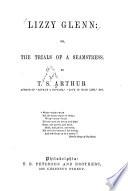
Lizzy Glenn: Or, The Trials of a Seamstress
Autor: Timothy Shay Arthur
Número de Páginas: 274
HSA Heritage Auctions Rare Books Auction Catalog #6030
Autor: James Gannon
Número de Páginas: 314
Dickens's Artistic Daughter Katey
Autor: Lucinda Hawksley
Número de Páginas: 459A biography of a Victorian-era woman who grew up as the daughter of novelist Charles Dickens—and found a creative career of her own. Katey Dickens was born into a house of turbulent celebrity and grew up surrounded by fascinating, famous, and infamous people. From a very young age, she knew her vocation was to be an artist. Lucinda Hawksley charts the life of a celebrated portrait painter who redefines our preconceptions about Victorian women. Living to be almost ninety, Katey survived an unconventional marriage, love affairs, heartbreak, depression, and the challenges of being a female artist in a male-dominated era. Compelling and illuminating, this biography of Katey Dickens tells the story of a spirited woman who found fame at the center of the first celebrity phenomenon; it also uncovers the reality of what it was like to be a child of Charles and Catherine Dickens.
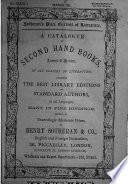
Sale-catalogues of Second-hand Books on Sale by Henry Sotheran & Co
Autor: Sotheran, Henry And Co
Número de Páginas: 906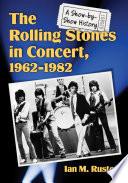
The Rolling Stones in Concert, 1962-1982
Autor: Ian M. Rusten
Número de Páginas: 340This day-by-day chronicle of every live concert by the Rolling Stones from 1962 through 1982 traces their development from a band playing small clubs around London to the global phenomenon we know today. Comprehensive coverage of the shows includes set lists, venues, concert reviews, anecdotes and notable events in the lives of the band members. A list of the Stones' radio recordings--some of which were performed before live audiences--and television performances is included, along with never-before-published posters, programs, tickets, handbills and photographs.
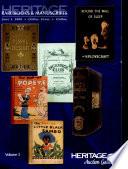
Heritage Rare Books & Manuscripts Auction Final Session # 683
Número de Páginas: 194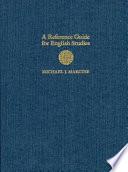
A Reference Guide for English Studies
Autor: Michael J. Marcuse
Número de Páginas: 872This ambitious undertaking is designed to acquaint students, teachers, and researchers with reference sources in any branch of English studies, which Marcuse defines as "all those subjects and lines of critical and scholarly inquiry presently pursued by members of university departments of English language and literature.'' Within each of 24 major sections, Marcuse lists and annotates bibliographies, guides, reviews of research, encyclopedias, dictionaries, journals, and reference histories. The annotations and various indexes are models of clarity and usefulness, and cross references are liberally supplied where appropriate. Although cost-conscious librarians will probably consider the several other excellent literary bibliographies in print, such as James L. Harner's Literary Research Guide (Modern Language Assn. of America, 1989), larger academic libraries will want Marcuse's volume.-- Jack Bales, Mary Washington Coll. Lib., Fredericksburg, Va. -Library Journal.
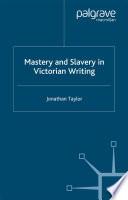
Mastery and Slavery in Victorian Writing
Autor: J. Taylor
Número de Páginas: 240Taking Hegel's famous " Master-Slave Dialectic " as its starting point, this wide-ranging book examines portrayals of masters, slaves and servants in works by Carlyle, Dickens, Eliot, Collins and others. The questions raised about modern mastery and slavery are pursued in relation to intriguing nineteenth-century figures as the American slave-holder, the musician, the demagogue and the Jew.

The Science of Starving in Victorian Literature, Medicine, and Political Economy
Autor: Andrew Mangham
Número de Páginas: 312The Science of Starving in Victorian Literature, Medicine, and Political Economy is a reassessment of the languages and methodologies used, throughout the nineteenth century, for discussing extreme hunger in Britain. Set against the providentialism of conservative political economy, this study uncovers an emerging, dynamic way of describing literal starvation in medicine and physiology. No longer seen as a divine punishment for individual failings, starvation became, in the human sciences, a pathology whose horrific symptoms registered failings of state and statute. Providing new and historically-rich readings of the works of Charles Kingsley, Elizabeth Gaskell, and Charles Dickens, this book suggests that the realism we have come to associate with Victorian social problem fiction learned a vast amount from the empirical, materialist objectives of the medical sciences and that, within the mechanics of these intersections, we find important re-examinations of how we might think about this ongoing humanitarian issue.
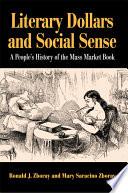
Literary Dollars and Social Sense
Autor: Ronald J. Zboray , Mary Saracino Zboray
Número de Páginas: 366Prior to the Civil War, publishing in America underwent a transformation from a genteel artisan trade supported by civic patronage and religious groups to a thriving, cut-throat national industry propelled by profit. Literary Dollars and Social Sense represents an important chapter in the historical experience of print culture, it illuminates the phenomenon of amateur writing and delineates the access points of the emerging mass market for print for distributors consumers and writers. It challenges the conventional assumptions that the literary public had little trouble embracing the new literary marketing that emerged at mid-century. The book uncover the tensions that author's faced between literature's role in the traditional moral economy and the lure of literary dollars for personal gain and fame. This book marks an important example in how scholars understand and conduct research in American literature.
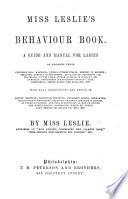
The Behaviour Book: a manual for ladies
Autor: Eliza Leslie
Número de Páginas: 364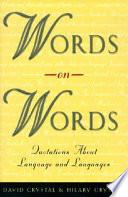
Words on Words
Autor: David Crystal , Hilary Crystal
Número de Páginas: 604From Homer ("winged words") to Robert Burns ("Beware a tongue that's smoothly hung") to Rudyard Kipling ("Words are, of course, the most powerful drug used by mankind"), writers from all over the world have put pen to paper on the inexhaustible topic of language. Yet surprisingly, their writings on the subject have never been gathered in a single volume. In Words on Words, David and Hilary Crystal have collected nearly 5,000 quotations about language and all its intriguing aspects: speaking, reading, writing, translation, verbosity, usage, slang, and more. As the stock-in-trade of so many professions—orators, media personalities, writers, and countless others—language's appeal as a subject is extraordinarily relevant and wide-ranging. The quotations are grouped thematically under 65 different headings, from "The Nature of Language" through the "Language of Politics" to "Quoting and Misquoting." This arrangement enables the reader to explore a topic through a variety of lenses, ancient and modern, domestic and foreign, scientific and casual, ironic and playful. Three thorough indexes—to authors, sources, and key words—provide different entry points into the collection. A...

Consuming Fictions
Autor: Gail Turley Houston
Número de Páginas: 264In this remarkable study, Gail Turley Houston examines the rich interplay of consumption as alimental process, medical entity, psychological construct, and economic practice in order to explore Charles Dickens’s fictional representations of Victorian culture as he presents it in his novels. Drawing from medical, historical, economic, psychoanalytic, and biographical materials from the Victorian period, Houston anchors her work in the belief that if class and gender are fictional constructions, real people’s lives are affected in complex and coercive ways by such constructions. Proceeding chronologically, Houston traces particular patterns throughout ten of Dickens’s major novels: The Pickwick Papers, Oliver Twist, The Old Curiosity Shop, Martin Chuzzlewit, Dombey and Son, David Copperfield, Bleak House, Little Dorrit, Great Expectations, and Our Mutual Friend. Houston maintains that Victorian codes of behavior prescribed for gender and class regarding sexual and alimental appetites were so extreme and complicated that numerous consequent eating disorders and related diseases developed. Ideologies about consumption translated into medically defined consumptions, such as...
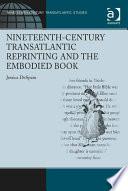
Nineteenth-Century Transatlantic Reprinting and the Embodied Book
Autor: Professor Jessica Despain
Número de Páginas: 348Until the Chace Act in 1891, no international copyright law existed between Britain and the United States, which meant publishers were free to edit text, excerpt whole passages, add new illustrations, and substantially redesign a book's appearance. In spite of this ongoing process of transatlantic transformation of texts, the metaphor of the book as a physical embodiment of its author persisted. Jessica DeSpain's study of this period of textual instability examines how the physical book acted as a major form of cultural exchange between Britain and the United States that called attention to volatile texts and the identities they manifested. Focusing on four influential works—Charles Dickens's American Notes for General Circulation, Susan Warner's The Wide, Wide World, Fanny Kemble's Journal of a Residence on a Georgian Plantation, and Walt Whitman's Democratic Vistas—DeSpain shows that for authors, readers, and publishers struggling with the unpredictability of the textual body, the physical book and the physical body became interchangeable metaphors of flux. At the same time, discourses of destabilized bodies inflected issues essential to transatlantic culture, including...
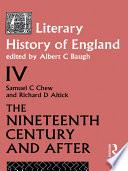
A Literary History of England Vol. 4
Autor: A Baugh
Número de Páginas: 625First published in 1959. Routledge is an imprint of Taylor & Francis, an informa company.

Dulcibel: A Tale of Old Salem
Autor: Henry Peterson
Número de Páginas: 219In "Dulcibel: A Tale of Old Salem," Henry Peterson intricately weaves a narrative that immerses readers in the turbulent world of 17th-century Salem, set against the backdrop of Puritan orthodoxy and societal upheaval. Through rich prose and compelling dialogue, Peterson captures the youthful defiance and burgeoning independence of his protagonist, Dulcibel, as she navigates personal desires and communal pressures. The novel deftly explores themes of love, sacrifice, and the harsh realities of a society grappling with fear and suspicion, showcasing Peterson's mastery of historical detail and character development. Henry Peterson, an accomplished author with a deep fascination for American history, draws upon his extensive research into colonial New England to bring authenticity and depth to this tale. His background in historical literature, combined with personal experiences growing up in a region steeped in Puritan history, has profoundly influenced his portrayal of the era's complexities. This novel, set amid the infamous witch trials, illuminates the intersection of personal and political spheres in a time fraught with moral dilemmas and societal strife. "Dulcibel: A Tale of...
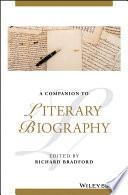
A Companion to Literary Biography
Autor: Richard Bradford
Número de Páginas: 632An authoritative review of literary biography covering the seventeenth century to the twentieth century A Companion to Literary Biography offers a comprehensive account of literary biography spanning the history of the genre across three centuries. The editor – an esteemed literary biographer and noted expert in the field – has encouraged contributors to explore the theoretical and methodological questions raised by the writing of biographies of writers. The text examines how biographers have dealt with the lives of classic authors from Chaucer to contemporary figures such as Kingsley Amis. The Companion brings a new perspective on how literary biography enables the reader to deal with the relationship between the writer and their work. Literary biography is the most popular form of writing about writing, yet it has been largely neglected in the academic community. This volume bridges the gap between literary biography as a popular genre and its relevance for the academic study of literature. This important work: Allows the author of a biography to be treated as part of the process of interpretation and investigates biographical reading as an important aspect of criticism...
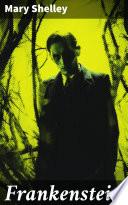
Frankenstein
Autor: Mary Shelley
Número de Páginas: 227Frankenstein, la obra maestra de Mary Shelley, es un hito en la literatura gótica y de ciencia ficción, publicada por primera vez en 1818. A través de su innovador formato epistolar, Shelley narra la historia de Víctor Frankenstein, un joven científico que, impulsado por su ambición, crea vida a partir de materia muerta, sólo para encontrarse con las terribles consecuencias de su acto. El estilo lírico y detallado de la autora permite una inmersión profunda en las emociones de los personajes, así como una reflexión sobre la naturaleza humana, el conocimiento y la responsabilidad ética en la ciencia. Este contexto literario se enmarca en el Romanticismo, donde Shelley aborda temas de la lucha individual contra fuerzas mayores, cuestionando las nociones de creación y destrucción que resuenan hasta nuestros días. Mary Shelley, hija del filósofo William Godwin y de la escritora Mary Wollstonecraft, fue influenciada desde joven por el ambiente intelectual en el que creció. Su relación con el poeta Percy Bysshe Shelley y su participación en las conversaciones del Círculo de Byron también moldearon su pensamiento crítico y su perspectiva sobre la existencia humana y ...

Gothic Stories Within Stories
Autor: Clayton Carlyle Tarr
Número de Páginas: 215Frame narratives--stories within stories--are featured in nearly every canonical Gothic novel. Sometimes dismissed as a shopworn convention of the genre, frame narratives in fact function as a dynamic basis for imaginative variation and are vital to evaluating the diverse Gothic tradition. The juxtaposition between the everyday "frame world" of the story and the disturbing embedded narrative allows the monstrous to escape textual confines, forcing the reader to experience the reassurance of the ordinary alongside the horror of the uncanny.
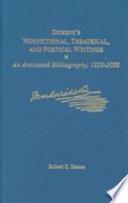
Dickens's Nonfictional, Theatrical, and Poetical Writings
Autor: Robert Conrad Hanna
Número de Páginas: 612Focuses on what could be described as 'all the rest' of Dickens's writings. This book talks about the author's more than 2,000 annotated entries that identify nonfictional, theatrical, and poetical works by way of extant commentary, since an eight year-old Dickens's first play in 1820.
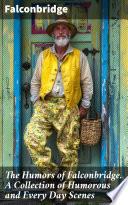
The Humors of Falconbridge. A Collection of Humorous and Every Day Scenes
Autor: Falconbridge
Número de Páginas: 400In 'The Humors of Falconbridge: A Collection of Humorous and Every Day Scenes', Falconbridge offers a delightful glimpse into everyday life through a series of humorous and lighthearted scenes. Written in a charming and accessible style, the book provides an engaging look at human behavior and the comedy found in the ordinary. This collection is reminiscent of the satirical works of the 18th century, highlighting Falconbridge's wit and keen observational skills. Readers can expect to be entertained and amused by the clever storytelling and relatable characters. Falconbridge's ability to capture the essence of human nature in a humorous and light-hearted way shines through in this collection. As a writer known for his humor and wit, Falconbridge brings a unique perspective to the literary world. His background in comedy and storytelling is evident in 'The Humors of Falconbridge', as he expertly weaves together comedic situations and everyday scenarios. Falconbridge's talent for creating relatable characters and charming anecdotes sets him apart as a writer who understands the intricacies of human behavior and the power of humor. I highly recommend 'The Humors of Falconbridge' to...

Real Money and Romanticism
Autor: Matthew Rowlinson
Número de Páginas: 267Modern systems of paper money and intellectual property became established in the Romantic period. Matthew Rowlinson shows how a new conception of material artefacts as the bearers of abstract value shaped Romantic conceptions of character, material culture and labour.
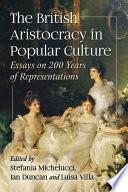
The British Aristocracy in Popular Culture
Autor: Stefania Michelucci , Ian Duncan , Luisa Villa
Número de Páginas: 278As traditional social hierarchies fall away, ever steeper levels of economic inequality and the entrenchment of new class distinctions lend a new glamor to the idea of aristocracy: witness the worldwide popularity of Downton Abbey, or the seemingly insatiable public fascination with the private lives of the British royal family. This collection of new essays investigates the enduring attraction to the icon of the aristocrat and the spectacle of aristocratic society. It traces the ambivalent reactions the aristocracy provokes and the needs (political, ideological, psychological, and otherwise) it caters to in modern times when the economic power of the landed classes have been eroded and their political role curtailed. In this interdisciplinary collection, aristocracy is considered from multiple viewpoints, including British and American literature, European history and politics, cultural studies, linguistics, visual arts, music, and media studies.
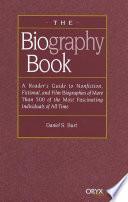
The Biography Book
Autor: Daniel S. Burt
Número de Páginas: 636From Marilyn to Mussolini, people captivate people. A&E's Biography, best-selling autobiographies, and biographical novels testify to the popularity of the genre. But where does one begin? Collected here are descriptions and evaluations of over 10,000 biographical works, including books of fact and fiction, biographies for young readers, and documentaries and movies, all based on the lives of over 500 historical figures from scientists and writers, to political and military leaders, to artists and musicians. Each entry includes a brief profile, autobiographical and primary sources, and recommended works. Short reviews describe the pertinent biographical works and offer insight into the qualities and special features of each title, helping readers to find the best biographical material available on hundreds of fascinating individuals.
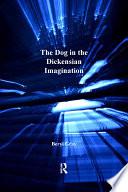
The Dog in the Dickensian Imagination
Autor: Beryl Gray
Número de Páginas: 320Fascinated by them, unable to ignore them, and imaginatively stimulated by them, Charles Dickens was an acute and unsentimental reporter on the dogs he kept and encountered during a time when they were a burgeoning part of the nineteenth-century urban and domestic scene. As dogs inhabited Dickens’s city, so too did they populate his fiction, journalism, and letters. In the first book-length work of criticism on Dickens’s relationship to canines, Beryl Gray shows that dogs, real and invented, were intrinsic to Dickens’s vision and experience of London and to his representations of its life. Gray draws on an array of reminiscences by Dickens’s friends, family, and fellow writers, and also situates her book within the context of nineteenth-century attitudes towards dogs as revealed in the periodical press, newspapers, and institutional archives. Integral to her study is her analysis of Dickens’s texts in relationship to their illustrations by George Cruikshank and Hablot Knight Browne and to portraiture by late eighteenth- and nineteenth-century artists like Thomas Gainsborough and Edwin Landseer. The Dog in the Dickensian Imagination will not only enlighten readers and...
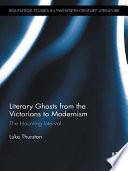
Literary Ghosts from the Victorians to Modernism
Autor: Luke Thurston
Número de Páginas: 192This book resituates the ghost story as a matter of literary hospitality and as part of a vital prehistory of modernism, seeing it not as a quaint neo-gothic ornament, but as a powerful literary response to the technological and psychological disturbances that marked the end of the Victorian era. Linking little-studied authors like M. R. James and May Sinclair to such canonical figures as Dickens, Henry James, Woolf, and Joyce, Thurston argues that the literary ghost should be seen as no mere relic of gothic style but as a portal of discovery, an opening onto the central modernist problem of how to write 'life itself.' Ghost stories are split between an ironic, often parodic reference to Gothic style and an evocation of 'life itself, ' an implicit repudiation of all literary style. Reading the ghost story as both a guest and a host story, this book traces the ghost as a disruptive figure in the 'hospitable' space of narrative from Maturin, Poe and Dickens to the fin de siècle, and then on into the twentieth century.
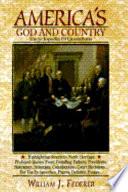
America's God and Country
Autor: William J. Federer , William Joseph Federer
Número de Páginas: 868An Invaluable resource highlighting america's noble heritage, profound quotes from founding fathers, presidents, statesmen, scientists, constitutions, court decisions ... for use in speeches, papers, debates, essays ...
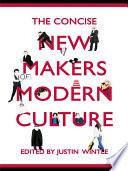
The Concise New Makers of Modern Culture
Autor: Justin Wintle
Número de Páginas: 1362A Who's Who of Western culture, from Woody Allen to Emile Zola... Containing four hundred essay-style entries, and covering the period from 1850 to the present, The Concise New Makers of Modern Culture includes artists, writers, dramatists, architects, philosophers, anthropologists, scientists, sociologists, major political figures, composers, film-makers and many other culturally significant individuals and is thoroughly international in its purview. Next to Karl Marx is Bob Marley, with John Ruskin is Salman Rushdie, alongside Darwin is Luigi Dallapiccola, Deng Xiaoping rubs shoulders with Jacques Derrida as do Julia Kristeva and Kropotkin. With its global reach, The Concise New Makers of Modern Culture provides a multi-voiced witness of the contemporary thinking world. The entries carry short bibliographies and there is thorough cross-referencing as well as an index of names and key terms.
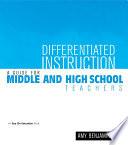
Differentiated Instruction
Autor: Amy Benjamin
Número de Páginas: 209This book demonstrates how to make your classroom more responsive to the needs of individual students with a wide variety of learning styles, interests, goals, cultural backgrounds, and prior knowledge. Focusing on grades 6 through 12, this book showcases classroom-tested activities and strategies. Differentiated Instruction: A Guide for Middle and High School Teachers shows you how to vary your instruction so you can respond to the needs of individual learners. The concrete examples in this book demonstrate how you can use differentiated instruction to clarify: the content (what you want students to know and be able to do) the process (how students are going to go about learning the content) and the product (how they will show you what they know.) This book is uniquely interactive. It features "Reflections" to help you understand your teaching style and guide you towards developing habits of mind which result in effective differentiated instruction. Also included is a chapter on teaching students whose native language is not English.

Untimely Ruins
Autor: Nick Yablon
Número de Páginas: 397American ruins have become increasingly prominent, whether in discussions of “urban blight” and home foreclosures, in commemorations of 9/11, or in postapocalyptic movies. In this highly original book, Nick Yablon argues that the association between American cities and ruins dates back to a much earlier period in the nation’s history. Recovering numerous scenes of urban desolation—from failed banks, abandoned towns, and dilapidated tenements to the crumbling skyscrapers and bridges envisioned in science fiction and cartoons—Untimely Ruins challenges the myth that ruins were absent or insignificant objects in nineteenth-century America. The first book to document an American cult of the ruin, Untimely Ruins traces its deviations as well as derivations from European conventions. Unlike classical and Gothic ruins, which decayed gracefully over centuries and inspired philosophical meditations about the fate of civilizations, America’s ruins were often “untimely,” appearing unpredictably and disappearing before they could accrue an aura of age. As modern ruins of steel and iron, they stimulated critical reflections about contemporary cities, and the unfamiliar kinds of...
Ver Opciones